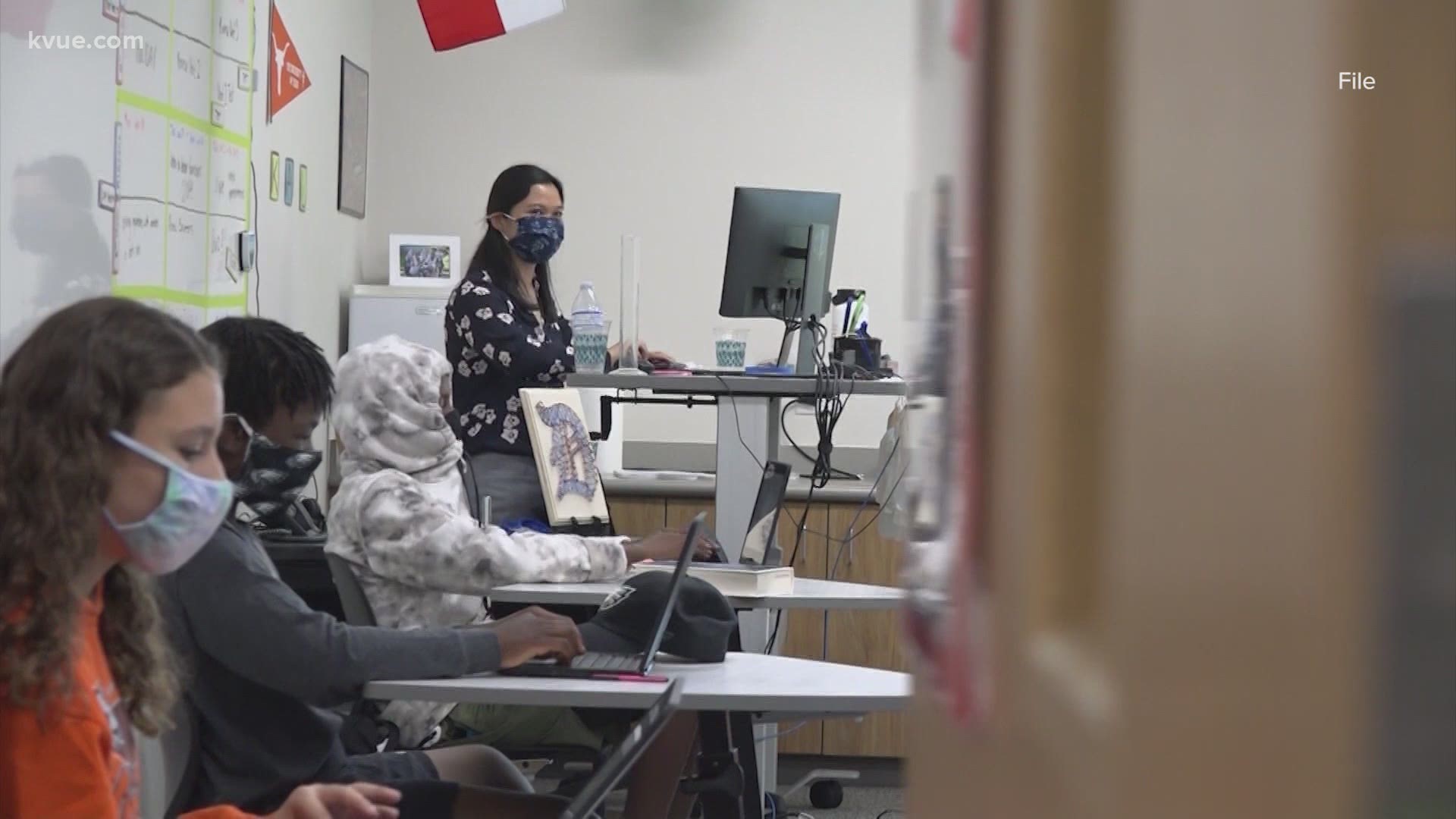AUSTIN, Texas — On Wednesday night, Austin ISD said it will temporarily transition to remote-only instruction for the week following Thanksgiving break, Nov. 30 to Dec. 4, after Travis County entered Stage 4 of its coronavirus risk-based guidelines.
In a letter to the AISD community, Superintendent Stephanie Elizalde said the district met with City and County officials along with Austin Public Health before making the decision. On-campus instruction will resume on Dec. 7.
"This decision is being made proactively to increase the likelihood of on-campus instruction for the final two weeks of the semester," said Elizalde. "By moving to 100% remote learning the week following the Thanksgiving break, the incubation period will have the opportunity to run its course and positive cases can be identified while safely at home."
She said AISD does not anticipate the need to repeat the process following the winter break as that holiday is 14 days while the Thanksgiving break was only seven.
Individual schools may have to add some minutes to their school day or adjust their calendar to ensure the district has met the required instructional minutes to continue to receive school funding from the TEA, Elizalde said. That information will be sent to those affected.
AISD will provide COVID-19 tests to staff, students and family members from Wednesday, Dec. 2, through Friday, Dec. 4.
"I realize that this decision will require many of our families to find alternate child care arrangements, but in assessing the risks, I concluded this was in the best interest of a long-term vision," said Elizalde. "I waited to make this decision to gather as much data and input as possible."
Some students in the district are not thrilled with the idea of learning from home after the holiday.
"When you're at home, they don't give you the same good learning tools as school," Joy Mitchell, a student at McBee Elementary School, said.
At home, students say its easier to get distracted. In the classroom, students say they have the mindset to work; at home, they could be doing any number of things while also sitting in the class.
"You could tell when people weren't paying attention because when the class would end, there would still be like 10 students that were still there even after the class ended," Jacob Rangel, a junior at William B. Travis High School, said.
Rangel started the year with remote learning, returned to school for two weeks, then a student was exposed to COVID-19, forcing the class to quarantine for two weeks. He finally returned to school Friday before Thanksgiving break started.
"One of the main issues is the internet, because sometimes at home, our internet can go, you know, everywhere," Rangel said. "Everyone's going to have some issues, right? But at school, you don't have to worry about that because you have a teacher there to guide you one on one and not having to go through the possible effect that you might not be hearing any of what they're saying."
Rangel asked his mom, Diana Vera, to return to school because he knew he wasn't succeeding the way he should be.
"They could just fool around at home, be like, 'Now, you know, I'm going to do this or that,' but they're telling us we need this structure," Vera said.
Vera works as a paramedic, so she understands precautions need to be taken in the case of the coronavirus. Allowing her son back on campus to learn was a difficult decision to make.
"I need my child to be educated, and I need him to pass, and I need him to have a future," Vera said.
The district said it is monitoring the situation and routinely consulting with Austin Public Health and Interim Health Authority Dr. Mark Escott.
Under Austin-Travis County’s Stage 4 response:
- Higher-risk individuals (those over the age of 65 and those who have chronic medical conditions) should stay home, except for essential trips such as buying groceries or seeking medical care.
- Lower-risk individuals should avoid social gatherings, any gatherings greater than 10 people, and non-essential travel.
- Recommend businesses and restaurants voluntarily reduce capacity to 25% to 50%.
- Recommend schools limit attendance at sporting events to players, coaches, and parents.
PEOPLE ARE ALSO READING:

